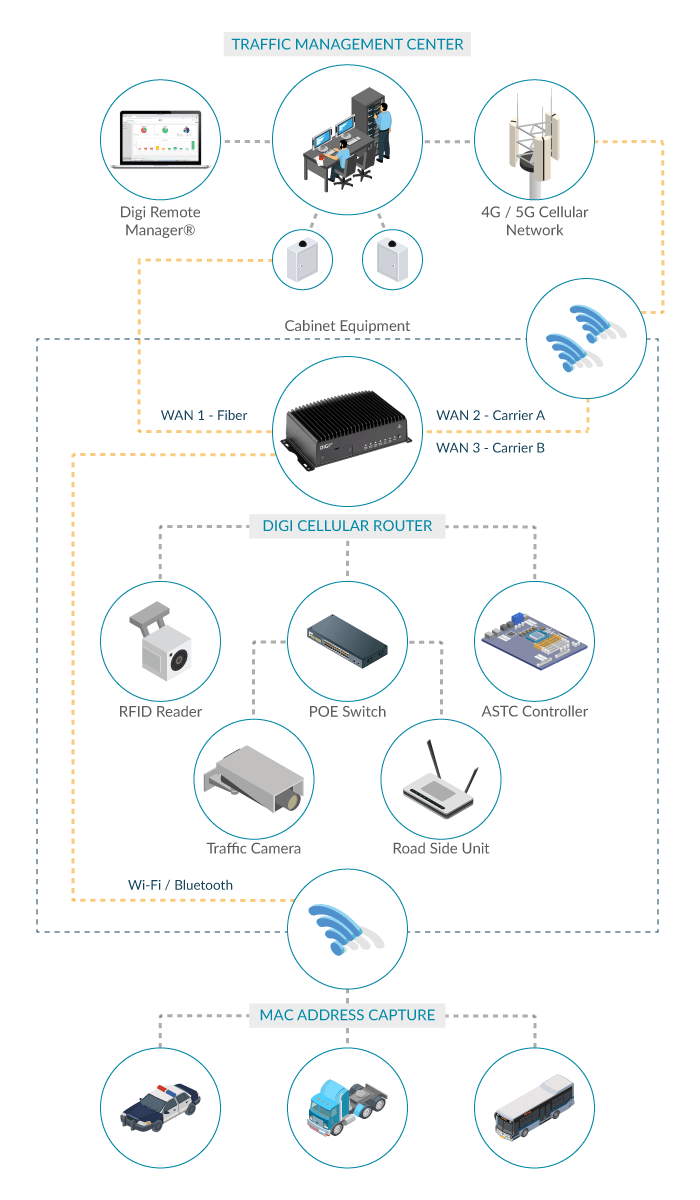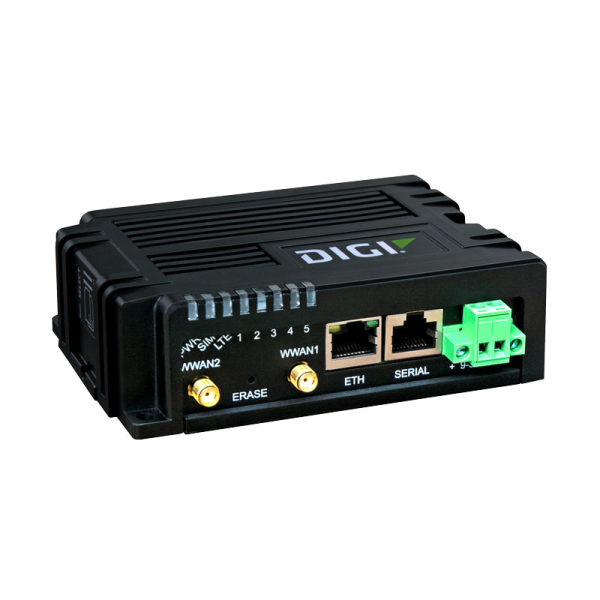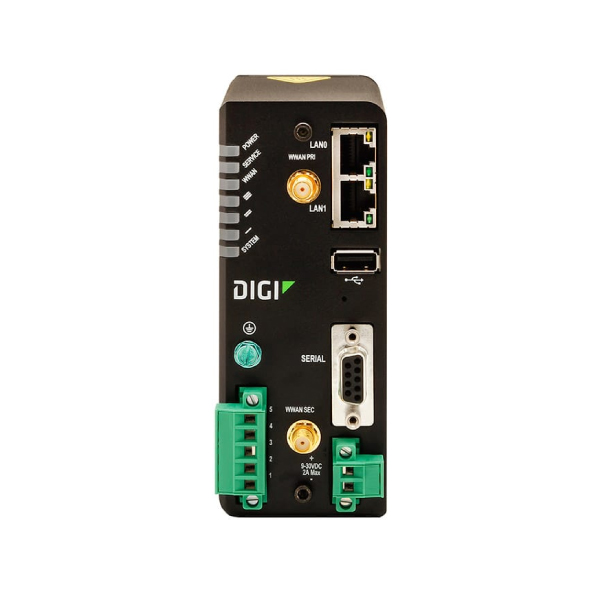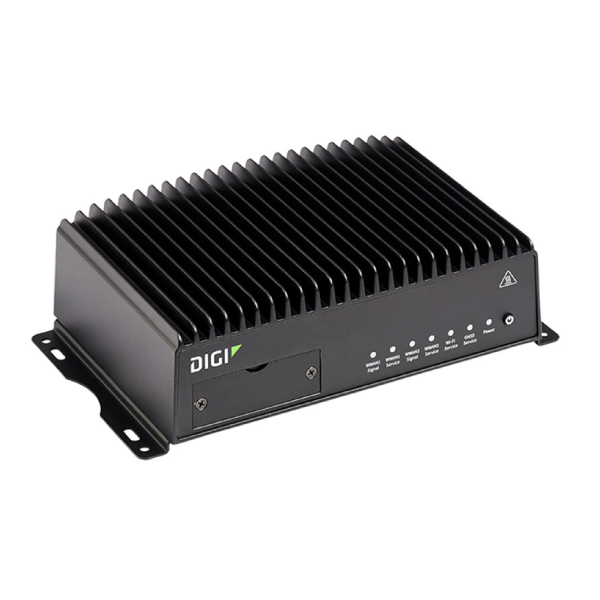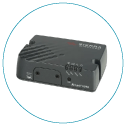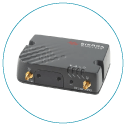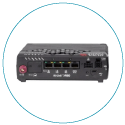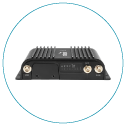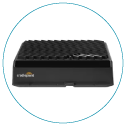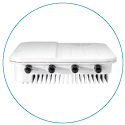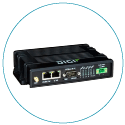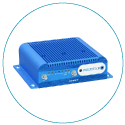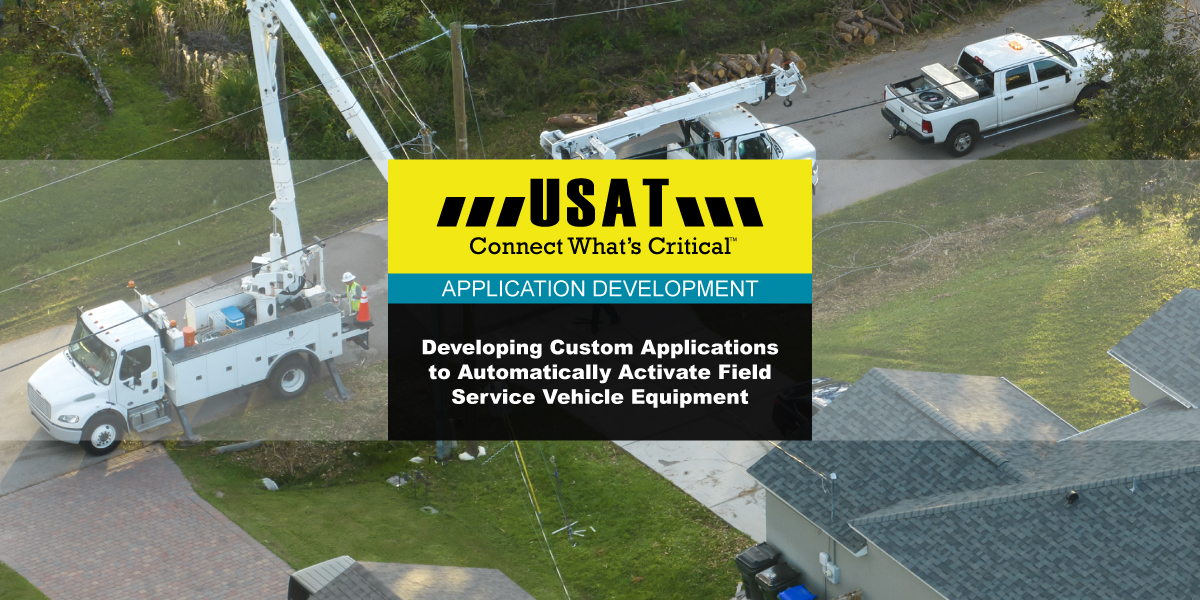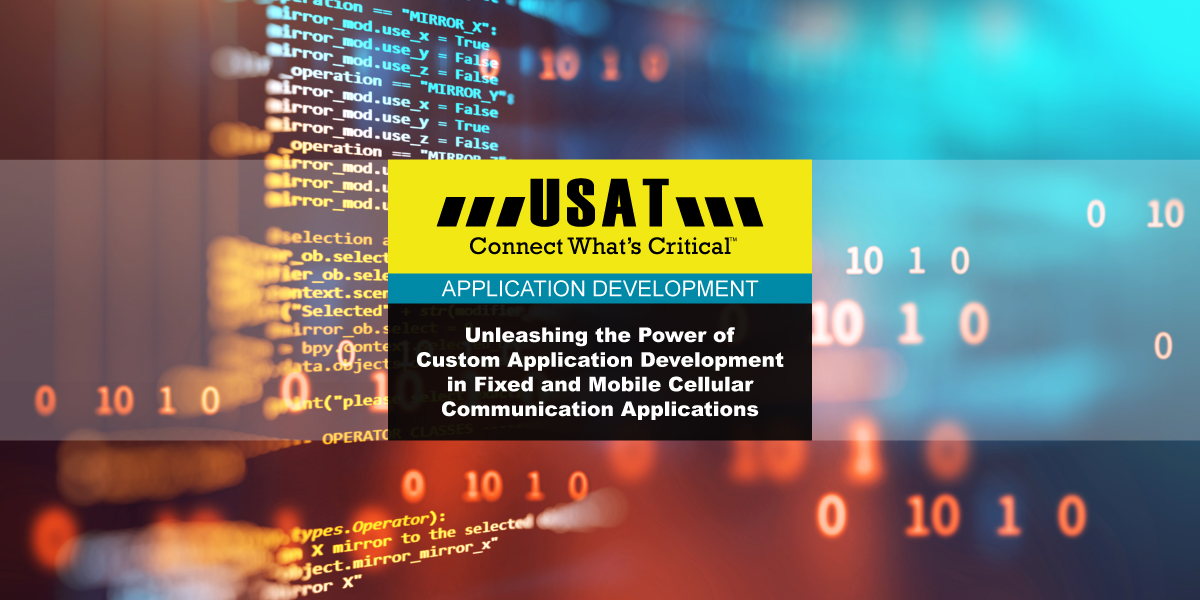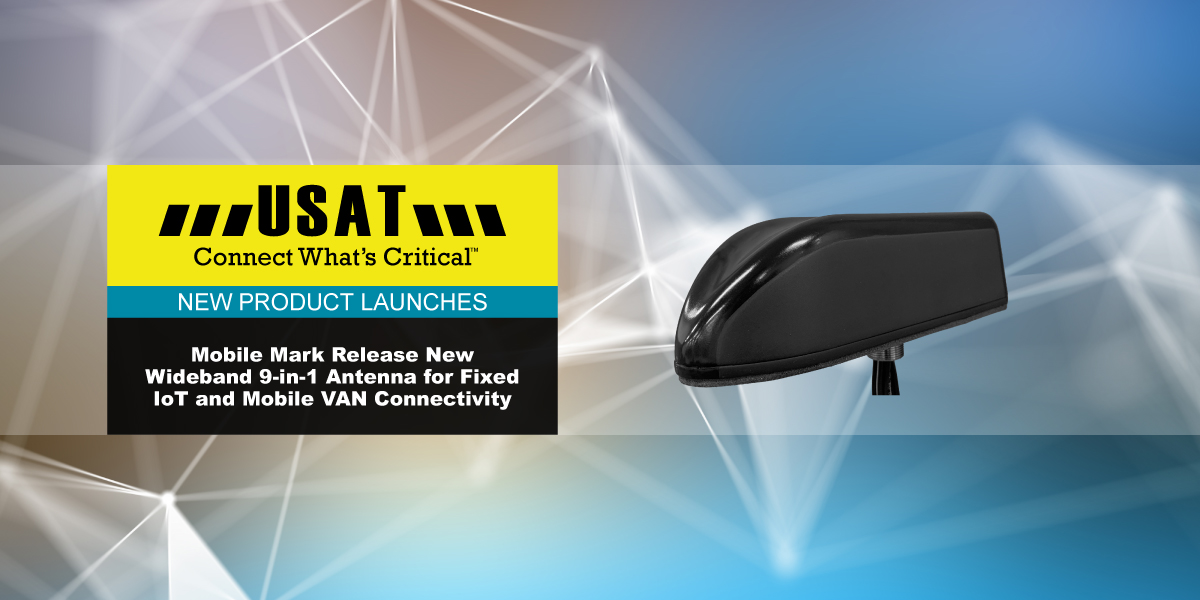Mission-Critical Traffic Management Communications
Quickly and cost effectively upgrade and optimize your traffic management systems
City managers face many challenges, especially with the trend toward urbanization. Surface transportation infrastructure capacity must increase to support new residents and businesses. However, widening the roads is costly and disruptive.
A better approach is to increase capacity using intelligent traffic management technology. These adaptive systems gather more citywide data and exert additional control at intersections. A dependable, high-speed communications network is critical for the traffic management system to function more efficiently.
Existing traffic management systems typically make use of a communications network for traffic signal coordination and system management. There are many legacy types, both narrowband and broadband, consisting of ISM-band radios, microwave, twisted pair and leased line.
Historically, the core requirements of these systems have not included real time, reliable communications, as the traffic controllers installed at intersections can operate autonomously at a basic service level using pre-programmed time-of-day schedules. Cities can build on this existing infrastructure, with updates to the communications infrastructure, for a significant improvement in traffic control.
Smart City Paradigm Shift
The smart city movement has brought about a paradigm shift, where basic pre-programmed operation is no longer sufficient. At the same time, new applications and technologies requiring reliable broadband communications have been proven to deliver benefits to the community served. A few example solutions are described below.
Congestion Detection
Traditional single-vehicle detector loops are replaced with radar and camera systems, enabling detection of entire vehicle queues and city congestion.
Adaptive Control
Detected vehicle congestion triggers changes to traffic signal timing to optimize traffic throughput in real time.
Connected Vehicles
The objective of this technology is to prevent accidents through real time communication between vehicles, pedestrians, and the traffic control system.
Bus Rapid Transit
Traffic signal timing is adjusted to maintain schedules of BRT transit buses.
Emergency Routing
A path through the city is coordinated for first responder vehicles, using congestion data and vehicle location to adapt route guidance and traffic signal timing.
The time is now to deploy the communications technologies that support these fast-moving smart cities initiatives. Cities on the cutting edge of this movement will see better traffic flow, improved emergency response and a reduction in traffic accidents and pedestrian fatalities. The heart of these deployments is a Smart Traffic Management System.
USAT provides business-critical Internet of Things (IoT) connectivity solutions from Digi International for the real-time monitoring and control of intelligent traffic management systems.
Architecture Smart Traffic Management Systems
Smart traffic is not complex. But it is critical to integrate system management and high-performance cellular technologies into existing infrastructure to establish flawless operation. The system architecture described below is designed for fast, secure communications as well as automation of critical systems and central visibility and control.
The Traffic Management Center (TMC) is the central facility where vehicle and pedestrian movement is monitored and controlled. The Digi router provides secure and reliable communications between intersection equipment and the TMC, while Digi Remote Manager® (Digi RM) provides central control over the communications infrastructure. The Traffic Cabinet Communications diagram presents the various entities and their connections.
The principal system functions are as follows:
- Backhaul communications: Multiple concurrent cellular and fiber links ensure continuous communications with the TMC. IPsec VPNs ensure secure passage through any network.
- Local network: The router’s built-in four-port Ethernet switch supports connections to IP-enabled equipment within the cabinet. A Power-over-Ethernet (POE) switch expands the port count and supplies power to multiple IP cameras.
- Legacy equipment: A serial port is provided for connection to legacy devices such as an RFID Reader. Typically, a server application accesses the device using virtual comm port redirection.
- Local management: The router supports simultaneous client and access point Wi-Fi operation. Nearby authorized personnel can download heavy data such as stored video files or manage cabinet equipment using a laptop or handheld device.
- MAC address capture: MAC addresses from passing Wi-Fi or Bluetooth devices are sent anonymously to a central server for travel time analysis and displays, providing drivers with an estimated driving time to key locations.
- Additional functionality: An available USB port allows for accessories and expansion, and GPS/GNSS provide additional options (not shown). The Digi router includes indicator LEDs for power, WAN signal strength, WAN service and GPS/GNSS (which can be reprogrammed for other functions).
Technology Trends
The following are some of the key advances in Information and Communications Technology (ICT) relevant to traffic management systems. Digi cellular routers incorporate these technologies to support smart cities in deploying the most robust, forward-thinking traffic management, transit system and emergency response applications.
Cellular Communications
Cellular communications are advancing at a rapid pace. Each new generation offers increased bandwidth, reliability, and services. Much of the credit is attributable to 3GPP, a global consortium of standards organizations created in the late 90’s with a vision for a wireless Internet. The advances are delivering key benefits to traffic management systems:
Service Reliability
Priority transmission even in shared spectrum is now available for eligible mission critical services such as traffic management systems.
Network Capacity
Higher density modulation enables increased data transmission speed without additional spectrum, reducing network operator costs and therefore service costs.
Lower Latency
The transmission delay of data packets continues to drop and is now in the range of a few tens of milliseconds, on average.
Equipment Costs
The global standard has resulted in economies of scale worldwide in technology deployment, product development and production.
Service Costs
The increasing market size, network expansion and open system established by 3GPP has reduced infrastructure costs for network operators.
Broadband Comms
Enables simultaneous transmission of both data and video.
With the availability of these benefits, cellular is now often deployed instead of fiber as the primary communications backhaul in traffic management systems. It is also used in conjunction with fiber as a secondary backhaul, or “failover,” since a fiber cut can result in an extended network outage.
The Impact of 5G
The long-term evolution of cellular infrastructure from 4G to 5G is certain to benefit traffic management systems in urban environments. For example:
- Multi-gigabit speeds will allow higher-resolution video surveillance to identify and resolve traffic incidents more quickly.
- Single-digit latency combined with V2X (vehicle to vehicle, vehicle to infrastructure and vehicle to pedestrian) will improve driver, passenger and pedestrian safety and reduce accidents and deaths.
- The massive amount of IoT devices deployed across a city will reduce excess traffic by enabling drivers to find a parking spot more quickly and get to their destination via the most optimal route available.
Keep up with 5G network news and migration planning by visiting Digi’s 5G Standards and Technologies page: https://www.digi.com/ resources/standards-and-technologies/5g.
Cloud Computing
Not that long ago, cloud computing was considered to be an interesting fad — at most an option for hosting generic non-essential applications. Now it is generally acknowledged by industry experts as a key force in the evolution of the global IT infrastructure.
Cloud computing is profoundly changing the way governments and businesses operate, due to the core function of IT today. Government and industry entities worldwide are using cloud-based software, platforms, and infrastructure to improve access, streamline processes, lower IT complexity, and reduce costs.
Deployment Approach for Traffic Systems
Fortunately, modern infrastructure systems such as traffic management are predominately IP-based, so the operation of one subsystem is often independent of other subsystems. This is the case for the communications network. Field service contractors supported by vendors can often upgrade communication network equipment without disruption to existing traffic management systems.
Installation of field equipment such as the router, power supply and antenna is straightforward. The router and power supply are situated on a shelf within the cabinet, and connect to existing equipment by Ethernet, serial or USB cable. The antenna is fixed to the cabinet roof, with the RF cables entering the cabinet via a threaded through-hole stud mount, sealed to prevent water ingress into the cabinet.
Digi RM provides a management interface for automated configuration during the site activation process. Any site-unique parameters are preloaded into Digi RM, and automatically download when the router connects. The Digi RM dashboard shows connection status and key performance data to help spot any issues that occur. You can also perform a quick speed test to confirm full operation in preparation for site commissioning.
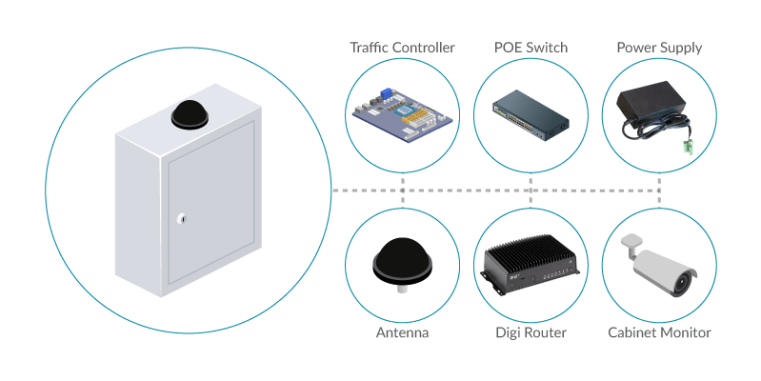
Equipment Description
The core components used in the communications network are described below. Depending on system requirements, the communications network may be extended to include an Ethernet switch in the cabinet and a network appliance in the TMC.
Digi Cellular Router
Digi’s growing offering of routers are purpose-built for smart traffic management and emergency traffic routing.
The flagship product in this series, the FirstNet Ready™ Digi WR54, will serve as an example for the purposes of this white paper. Contact Digi to identify the right solution for your needs.
The cellular router functions as a central communications gateway, using multiple WAN interfaces to maintain an active link to the central traffic management center.
Digi WR54 is well-suited for any application requiring continuous connectivity, field longevity and edge computing. This industrial-class router is designed to provide secure routing and gateway functions across traditional and wireless communications networks, protocols and interfaces. It bridges local private wired or wireless subnets across a public or untrusted network, ensuring message privacy and integrity, using trusted channels with authenticated systems.
The router’s advanced capabilities enable mission critical communication through concurrent and independent dual cellular and dual WLAN interfaces. The device is designed and verified to relevant industry standards including the NEMA TS2 temperature rating to ensure reliable, high performance operation in challenging environments. In addition, an embedded Python environment enables quick adaptation to future evolving system requirements.
The Digi WR54 cellular router is supported by Digi Remote Manager (Digi RM), a customized dual output power supply and antenna. Next, we will discuss the features at a high level.
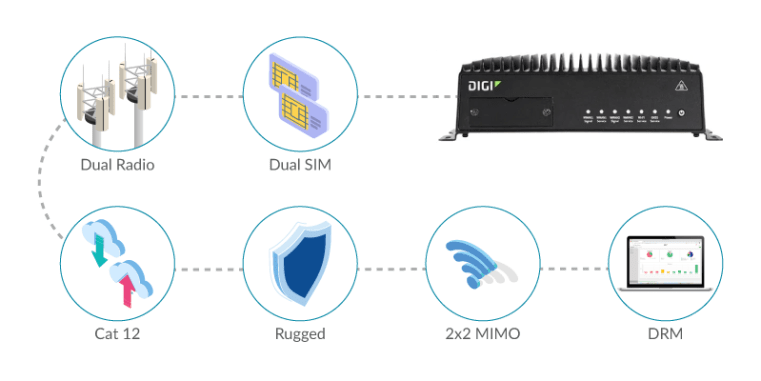
Digi Remote Manager
Digi RM is a cloud-based device management, security, and data enablement platform. The data enablement functions permit integration of legacy systems into the communications network. The platform includes various dashboards and reports as well as a data repository, enabling other agency systems to generate comprehensive reports that integrate device and performance data. The Digi RM reports range from daily summaries to detailed time-based charts of individual system metrics such as link uptime, network response and data throughput. The Digi RM API enables transfer of device and performance data to other systems using a restful API and JSON formats.
Digi RM’s security feature provides a range of security insights as well as automated configuration management. Once Digi devices are configured, Digi RM acts as a watchdog over the network. It not only monitors for anomalies but also automatically resets configurations back to their prescribed settings in the event of an unauthorized change, to thwart cyber threats.

The device management capabilities enable personnel to perform a range of tasks for efficient and effective operation. For example:
- Proactively keep all devices up to date with the latest security patches, firmware, and configurations.
- Set up health metrics to track the state of the system at a high level, and then drill down to assess any issues.
- Set up alerts to inform system administrators or other connected systems of any warning or alarm conditions.
- Manage remediation automatically if any router falls out of compliance for any reason.
Power Supply
The industrial-grade power supply unit (PSU) supports both the Digi WR54 router and a POE switch in its default configuration. Its modular design is expandable up to five different voltage outputs. The PSU is rated for industrial environments and customized for the unique application requirements, as highlighted:
- Dual 24 VDC and 56 VDC isolated outputs (expandable to five outputs)
- Agency safety approvals
- Operates at low line voltage and across line sags
- Fanless operation for added reliability
- Operates across NEMA TS2 temperature range
- Conformal coating
- Power-over-Ethernet (POE) electrical isolation ratings
- Monitoring and control using PMBus standard
- Auxiliary 12 VDC output for accessories
Antenna
The antenna is actually multiple antenna elements housed within a single radome. Each element is tuned to transmit and receive in the appropriate frequency bands:
- Cellular: 698-960 MHz and 1710-2700 MHz
- Wi-Fi: 2.4-2.5 GHz and 4.9-5.9 GHz
- Bluetooth: 2.4-2.5 GHz
- GNSS: 1565-1608 MHz (receive only)
The radome is constructed of water resistant, UV stable, impact resistant, fiberglass-reinforced composite. Cable egress is through the bottom plate, where VHB adhesive and a threaded mount make for a vandal-resistant installation.
Contact USAT
If you need a solution for traffic management and control, USAT is a premiere resale partner of Digi International with access to every device featured herein. And with dedicated solutions engineers on staff, we can provision, kit, and configure each device to meet your organizations' exacting needs.
Should you need it, we also installation teams located across Alabama, Florida, Tennessee, Georgia, North Carolina, South Carolina, Virginia, Texas, and Colorado ready to rapidly install your cellular equipment.
Contact us today for a free consultation on your next connectivity project.
- Give Us a Call: (919) 942-4214
- Send Us an Email: [email protected]
- Request a Consultant: Click Here
Recommended Digi Equipment for Smart Traffic Management Systems
Share this Post


